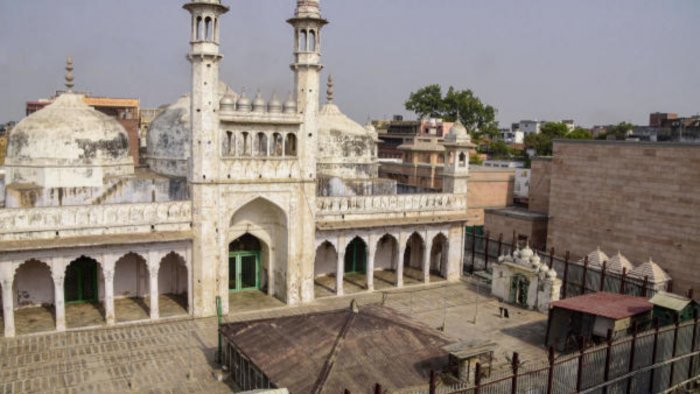
Lucknow, Oct 14: A Varanasi district court Friday rejected a plea by four Hindutva women seeking carbon dating of a stone inside the Gyanvapi Mosque during the videography survey of the premises earlier this year, saying that it could 'damage' it. The Hindutva outfits are claiming it to be shivling.
The court, which had earlier reserved its ruling on the petition, said that it would be a violation of the Supreme Court's directive of preserving the alleged 'shivling', if it suffered damage owing to the use of ground penetrating radar during carbon dating.
The court, delivering its ruling before a packed courtroom, also said that it (possible damage to the Shivling) could also ''hurt religious sentiments'' of the people. Thereby, it deemed it improper to issue a directive to the Archaeological Survey of India (ASI) for carbon dating.
One of the lawyers for the petitioners Madan Mohan Yadav said that they had the option of challenging the ruling in the higher court. ''We have the option of approaching the high court. We will put forth our contention before it,'' he added.
Another lawyer for the Hindu petitioners, Vishnu Jain, said that he would challenge the ruling in the Supreme Court but declined to elaborate.
Upon the women's petition seeking carbon dating of the 'Shivling' a few months ago, the court had sought clarifications on whether it could order for a scientific investigation and also if the 'Shivling' could be made part of the case. The court had also heard the Muslim parties, which had opposed the plea for carbon dating.
The Hindu lawyers had claimed that a 'Shivling' was found at a small pond after which the court had ordered the sealing of the place. Lawyers representing the Muslim parties, however, refuted the claim and said that what was being called a 'Shivling' was in fact a 'fountain'.
The premises had been a bone of contention between the two communities for the past several decades but there was renewed clamor to ''take back'' the Kashi Vishwanath Temple premises by the saffron outfits after the favourable decision of the apex court in the Ram Temple case.
Hindu petitioners contended that a part of the temple had been demolished by the Mughal emperor Aurangzeb in the 17th century. The Muslim side contended that the mosque existed before the reign of Aurangzeb and also claimed that the same had also been mentioned in the land records.







Comments
Add new comment